-
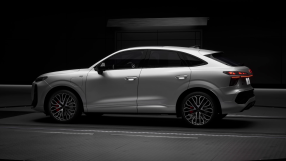
Audi Q3 Sportback - Design and aeracoustics Audi Q3 Sportback - Design and aeracoustics
Audi Q3 Sportback - Design and aeracoustics
Audi Q3 Sportback
The Audi Q3 at its finest: dynamic and muscular proportions balanced with a spacious interior
08/25
- Available media:
-

-
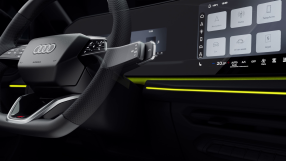
Audi Q3 SUV – Interior and operating concept Audi Q3 SUV – Interior and operating concept
Audi Q3 SUV – Interior and operating concept
The interior: functional and clearly designed
Compared to the previous model, the design and functionality have been significantly improved. Its high-contrast design deliberately places elements in the foreground or background, creating a cozy interior feel. A generous application area, the so-called Softwrap, extends from the doors across the entire width of the dashboard, highlighting the horizontal alignment for a maximum sense of space. The panoramic display with 11.9-inch instrument cluster and 12.8-inch MMI touch display forms the so-called digital stage. Its curved design creates a driver-oriented cockpit layout. Audi is thus transferring the digital stage from the full-size class to the compact segment. A head-up display for important information supplements the digital displays. Flat door handles and a modern, uncluttered console underscore the feeling of space and comfort.
- Available media:
-

-
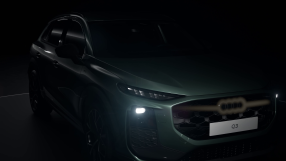
Audi Q3 SUV – Exterior design Audi Q3 SUV – Exterior design
Audi Q3 SUV – Exterior design
Compared to its predecessor, the new Audi Q3 has an even more muscular and emotional design. Its body is defined by the perfect combination of rounded sections and precise lines. The wide Singleframe is positioned high up, and the sleekly tapered headlights create a focused look and are fully integrated into the vehicle's aerodynamic concept.
- Available media:
-

-
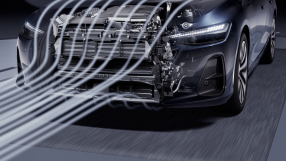
Audi A6 Sedan - Aerodynamics Audi A6 Sedan - Aerodynamics
Audi A6 Sedan - Aerodynamics
Aerodynamics: the best drag coefficient of an Audi with a combustion engine
The sporty and low design of the new Audi A6 Sedan contributes to its outstanding aerodynamics, ensuring a drag coefficient (Cd value) of 0.23. This is the best value of any series-produced model with a combustion engine in Audi history. Air curtains are used to ensure that the airflow around the front wheels and sides of the vehicle is as smooth as possible. These have been seamlessly integrated into the new design of the A6 Sedan*. Two separately controllable cool-air intakes behind the Singleframe radiator grille are part of the aerodynamics concept. They ensure optimized airflow around the engine bay. To harness the full potential of this technology, Audi has also optimized the seal between the bumper and the cooling unit, reducing airflow losses in this area by up to 70 percent. To achieve this, the air control elements were made significantly more rigid. The unified interface for the air intake and for engine cooling also contributes to improved airflow around the body. Furthermore, a front spoiler in the front bumper reduces front-axle lift and ensures better airflow around the underbody. In addition, numerous panels on the vehicle’s underside ensure controlled and harmonious airflow. These include wheel spoilers and specific covers on the transmission tunnel and rear axle.
04/25
- Available media:
-

-
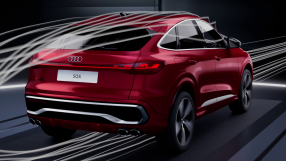
Audi SQ5 - Design and aerodynamics Audi SQ5 Sportback - Design and aerodynamics
Audi SQ5 Sportback - Design and aerodynamics
Sporty design thanks to dynamic, sloping roofline
The unmistakable design exudes sportiness with its characteristic sloping rear and elegant lines.
- Available media:
-

-
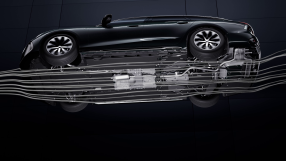
Audi A6 Avant - Aerodynamics Audi A6 Avant - Aerodynamics
Audi A6 Avant - Aerodynamics
The perfect interplay: design and aerodynamics
With its reduced design language, the A6 Avant conveys a functional and timeless character. This is reflected in both its design and the aerodynamics, which boasts a drag coefficient of 0.25 – the best value of a combustion-engine Avant at Audi.
In addition to the large air curtains and controllable cool-air intakes at the front, the striking roof spoiler and aerodynamic panels on the sides of the rear window are the main contributors to this achievement in aerodynamics.
The sporty rear with eye-catching diffuser embodies typical Avant characteristics. Paired with the quattro blisters powerfully emerging from the shoulder area and the wide track, the rear accentuates the model’s dynamic design. At the same time, its long wheelbase and extended hood embody elegance and round off the perfect proportions of the A6 Avant.
- Available media:
-

-
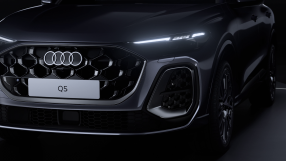
Audi Q5 - Exterior design Purism and dynamism: the exterior design
The third generation of the Q5 SUV models has become even sportier and offers perfect proportions. The taut and high shoulder line creates a powerful silhouette, connects the front and rear lights, and makes the vehicle appear longer. Above the sill, a rising line runs over the wheel arches and into the rear bumper, giving the vehicle a dynamic appearance even when stationary.
The front is self-confident, as all the defining design elements are positioned one level higher than in the predecessor model. The sporty, wide Singleframe sits high and is flanked by vertical, functional air curtains.
The strongly filed and sculpturally shaped headlights create a sharp, focused look, manifesting the agile and self-confident character of the car right from the front. A large air intake with sensors sits under the Singleframe, giving the Q5 a visually full and wide stance on the road.The exterior S line impresses with striking and sporty body components, such as the Air Curtain Tubes with matt anthracite chrome-look accents. On the S model, these elements have a matt silver chrome look.
The rear of the Q5 SUV has an extremely clear design thanks to the maximum reduction of lines. From the rear window to the lower edge of the three-dimensional shaped light strip, there is a smooth surface, defined by the light strip with a sharp cut across the entire width of the vehicle. The area between the light strip and bumper is kept sleek and gives the SUV a sporty elegance. The diffuser is integrated into the raised bumpers as an island. The positioning and shape of the functional tailpipes depends on the engine: a double square tailpipe under the diffuser on the left-hand side (for all diesel engines), or rectangular tailpipes on the right and left (for all petrol engines). The S model features the four iconic twin round tailpipes in a new, sharpened design.
- Available media:
-

-
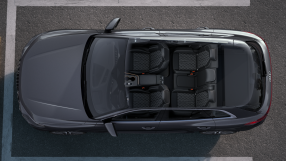
Audi Q5 - Package and variability Audi Q5 - Package and Variability
Audi Q5 - Package and Variability
Practical: Space concept and variability
The latest generation of the new Audi Q5 has gained significantly in key product attributes – and occupants can feel this from the very first time they experience it. In combination with the new interior concept, the result is a comfortable feeling of space with ample head and legroom.
A particularly practical feature of the Audi Q5 SUV is the fully adjustable rear seat. It can be moved lengthways and tilted, thus increasing the trunk volume or comfort for rear passengers as required. At the same time, three people can be comfortably seated on the rear bench. With the rear seats folded down, the transport volume increases to up to 1,473 liters, depending on the model variant. The luggage compartment cover can be stowed in a specially designed compartment under the luggage compartment floor. This provides even more space for luggage and a secure place for the cov
- Available media:
-

-
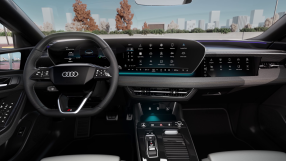
Audi A6 Avant e-tron – Interior and package Audi A6 Avant e-tron – Interior and package
Audi A6 Avant e-tron – Interior and package
Interior and MMI panoramic display
The interior of the Audi A6 e-tron* is consistently geared towards the users' needs. The three-dimensional and high contrast design deliberately places elements in the foreground or background, creating a spatial architecture tailored to the occupants in terms of design and ergonomics.- Available media:
-

-
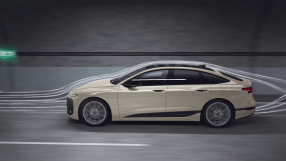
Audi A6 Sportback e-tron – Efficiency technologies and Aerodynamics Audi A6 Sportback e-tron – Efficiency technologies and Aerodynamics
Audi A6 Sportback e-tron – Efficiency technologies and Aerodynamics
Best in class: outstanding aerodynamics
Superior aerodynamics is a core component of the long history of successes for Audi. The aerodynamic heroes of the past, such as the Audi 100 (C3) and the Audi 80 (B3), also belong to the mid-size segment.- Available media:
-


-
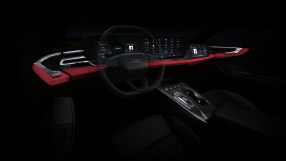
Audi S5 Avant – Interior design Audi S5 Avant – Interior design
Audi S5 Avant – Interior design
The new interior design: technology meets comfort
The design of the new Audi A5 interior is based on four characteristic features. Firstly, the
interior is designed to be human-centric, i.e., consistently geared toward the needs of its users.- Available media:
-


-
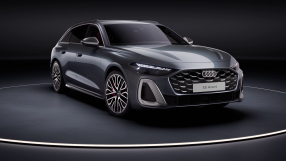
Audi S5 Avant – Exterior design Audi S5 Avant – Exterior design
Audi S5 Avant – Exterior design
Dynamic and muscular exterior design
Even at first glance, the totally redesigned A5 family has a powerful and clean design. The
modified proportions with a long wheelbase, large wheels, and flat, sporty body embody
progressive dynamism and premium standards.- Available media:
-

-
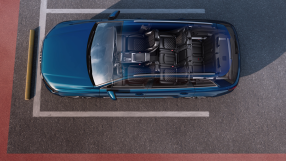
Audi Q7 – Package and variability Audi Q7 – Package and variability
Audi Q7 – Package and variability
Both the five- and seven-seat versions of the Audi Q7 combine high prestige with everyday practicality.
- Available media:
-

-
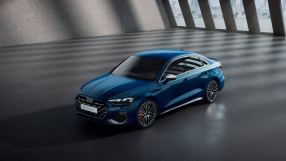
Audi S3 Sedan - Design Audi S3 Sedan - Exterior design
Audi S3 Sedan - Exterior design
With the model upgrade, the Audi S3 has an even sportier and tauter appearance.
- Available media:
-

-
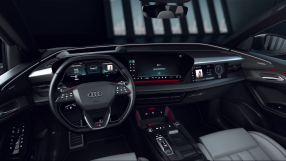
Audi Q6 e-tron – Design Audi Q6 e-tron – Design
Audi Q6 e-tron – Design
The Audi Q6 e-tron embodies typical Audi SUV styling with a further refined e-tron design language. The new design philosophy in the interior and pioneering technologies debuting in the new model, begin the next chapter in electric mobility for the Four Rings and make Vorsprung durch Technik a tangible experience every day.
- Available media:
-


-
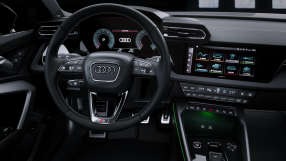
Audi A3 Sportback - Interior Audi A3 Sportback – Interior
Audi A3 Sportback – Interior
To match the more striking exterior, the interior has also been significantly sharpened. There are quite a few innovations here – from the shifter design and air vents to the decorative fabric inlays and new interior lighting. All these elements are precise and detailed, emphasizing the vehicle’s progressive and technical look.
- Available media:
-

-
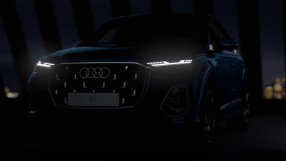
Audi Q7 – Exterieurdesign Audi Q7 – Exterior design
Audi Q7 – Exterior design
Powerful, spacious, elegant: Exterior
Following the launch of the second generation with all-wheel steering in 2015 and an initial product upgrade in 2019, the new Q7 impressively shows its robust and elegant design with a second comprehensive upgrade in 2023. The largest and most versatile SUV in the lineup of the brand with the four rings features Audi’s modern design language. With its even more minimalist form, clean surfaces, and exceptionally large volume, the Q7 stands for variability in every situation.
- Available media:
-

-
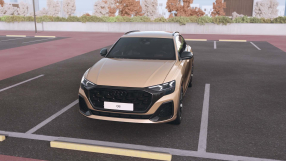
Audi Q8 Interieur – Package und Variabilität Audi Q8 – Interior - package and variability
Audi Q8 – Interior - package and variability
The Audi Q8 exudes sporty dynamics and upscale prestige like no other SUV from the brand with the four rings. With a wheelbase of 3.00 meters (9.8 ft), it offers a spacious interior that beats that of its direct competitors in most relevant dimensions, including interior length and headroom.
- Available media:
-

-
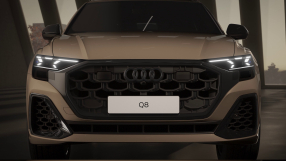
Audi Q8 – Exterior Design Audi Q8 – Exterior design
Audi Q8 – Exterior design
With its expressive design, the revised Q8* is a sporty, elegant SUV coupé from the brand with the four rings. With its clean shape, generous surfaces, and clear volumes, the Q8* paints a dynamic picture.
- Available media:
-

-
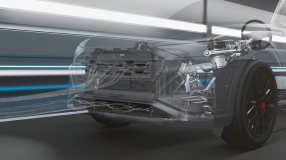
Audi Q8 Sportback e-tron – Active grill shutter Audi Q8 Sportback e-tron – Aerodynamics
Audi Q8 Sportback e-tron – Aerodynamics
Further improved aerodynamics
With the Audi Q8 e-tron*, the topic of aerodynamics was a top priority. This resulted in a reduction of the drag coefficient from 0.26 to 0.24 cw for the Q8 Sportback e-tron* and from 0.28 to 0.27 cw for the Q8 e-tron*. The wheel spoilers mounted on the underbody help divert airflow around the wheels. The spoilers on the front axle were enlarged, and the Audi Q8 Sportback e-tron* now has spoilers on the rear wheels as well. With the SQ8 Sportback e-tron*, spoilers are only mounted on the rear axle. In the area around the grille, this is the first time an Audi model has had a self-sealing system in addition to the electric shutters that automatically close the radiator. This system further optimizes the airflow at the front of the car and prevents undesired losses.
- Available media:
-

-
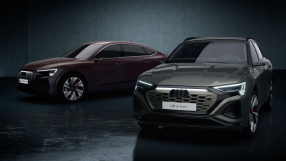
Audi Q8 e-tron – Exterior design Audi Q8 e-tron – Exterior design
Audi Q8 e-tron – Exterior design
New face, new name, new corporate identity
By calling this model the Q8, Audi is making a clear statement that the Audi Q8 e-tron* is the top model among its electric SUVs and crossovers. The Audi Q8 e-tron* and Q8 Sportback e-tron* are immediately identifiable as fully electric models at first glance.
- Available media:
-

-
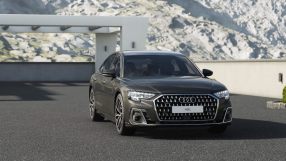
Audi A8 – Exterieur design -
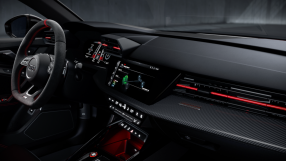
Audi RS 3 – Interior design Audi RS 3 – Interior design
In the interior, too, many elements specific to the RS accentuate its sportiness. The RS-specific blinking shift indicator in manual transmission mode changes the rpm display from green to yellow to red, blinking in a manner identical to that used in motorsports, to indicate the ideal time to change gears. The genuine racing feeling is further enhanced by the carbon inlay in the instrument panel and RS sport seats with RS embossing and anthracite contrast stitching.
- Available media:
-

-
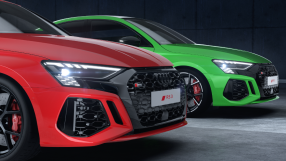
Audi RS 3 – Design and daytime running light Audi RS 3 – Design and daytime running lights
Audi RS 3 – Design and daytime running lights
The design of the new Audi RS 32 is even more dynamic and powerful than that of its predecessor. In the front, the wide RS bumper, the redesigned Singleframe with its distinctive honeycomb grille, and the large air intakes give the compact sports car an expressive appearance.
- Available media:
-


-
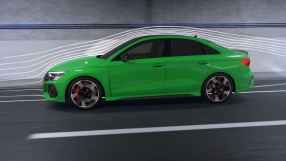
Audi RS 3 – Aerodynamics Audi RS 3 – Aerodynamics
Audi RS 3 – Aerodynamics
The design of the new Audi RS 32 is even more dynamic and powerful than that of its predecessor. In the front, the wide RS bumper, the redesigned Singleframe with its distinctive honeycomb grille, and the large air intakes give the compact sports car an expressive appearance.
- Available media:
-


-
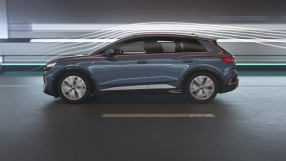
Audi Q4 e-tron – Aerodynamics Audi Q4 (Sportback) e-tron – Aerodynamics
Audi Q4 (Sportback) e-tron – Aerodynamics
The design of the two compact electric SUVs is full of character and impresses with the high quality of its aerodynamics. The Audi Q4 e-tron and the Q4 Sportback e-tron generate drag coefficients of 0.28 and 0.26 respectively, with the efficiency and range reaping the benefits.
- Available media:
-

-
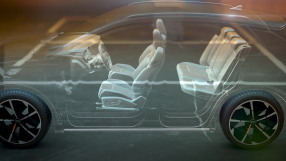
Audi Q4 e-tron – Interieur&Package_en Audi Q4 e-tron – Interior and package
Audi Q4 e-tron – Interior and package
Even getting into the Audi Q4 e-tron is a comfortable experience: The doors open wide, and the seats are in a comfortably high position. The driver and up to four passengers enjoy a generously spacious interior, made possible in part by the fact that there is only a flat step instead of a center tunnel. The seat position in the second row is almost seven centimeters (2.8 in) higher than at the front, while still offering plenty of headroom – and the knee room is positively luxurious.
- Available media:
-


-
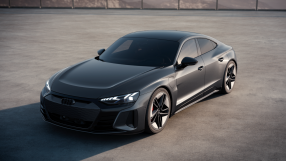
Audi RS e-tron GT – Design Audi RS e-tron GT – Design
Audi RS e-tron GT – Design
The e-tron GT is an emotive four-door coupé and the new signature car from the Audi brand. The electric figurehead features expressive design language that emphasizes the Audi standard of being an innovative automotive design brand that stands for sportiness and progressiveness.
- Available media:
-

-
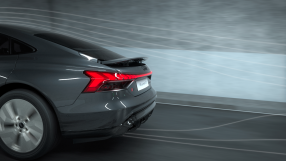
Audi RS e-tron GT – Aerodynamik EN -
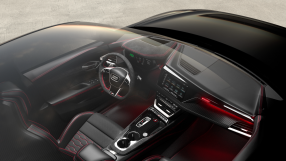
Audi e-tron GT - Interior design and seating position -
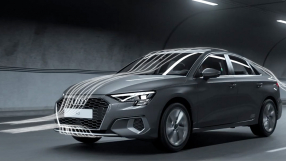
Audi A3 Sedan – Aerodynamics Audi A3 Sedan – Aerodynamics
Audi A3 Sedan – Aerodynamics
The aerodynamics benefit from the higher rear end compared with the predecessor as well as the large diffuser. As a result, the new A3 Sedan with the 2.0 TDI 110 kW (150 PS) achieves a Cd value of 0.25 and is therefore 0.04 Cd points better than the first generation.
- Available media:
-

-

Audi Q7 – Design en -
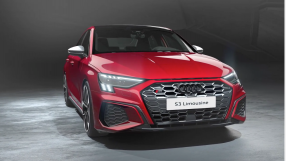
Audi S3 Sedan – Design Audi S3 Sedan – Design
Audi S3 Sedan – Design
Characteristic design and lighting - The new S3 models display their dynamic character from the very first glance.
- Available media:
-

-
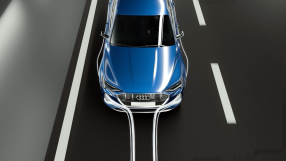
Audi e-tron S Sportback – Aerodynamics Audi e-tron S Sportback – Aerodynamics
Audi e-tron S Sportback – Aerodynamics
The airflow through the wheel arch trims helps Audi resolve the conflict of objectives between outstanding aerodynamics and sporty looks. For the first time, the brand with the Four Rings is bringing this innovative, patented solution to high-volume automobile production.
- Available media:
-


-
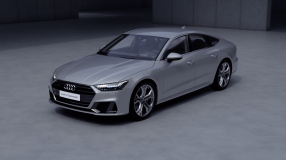
Audi A7 Sportback – Exterieurdesign Audi A7 Sportback – Exterieurdesign
Audi A7 Sportback – Exterieurdesign
The exterior design of the A7 Sportback is an expression of the new design language that Audi introduced with the prologue study and made its production debut in the new Audi A8. With large surfaces, sharp edges and taut, athletic lines, the A7 signals dynamics and progressiveness from every perspective.
- Available media:
-

-
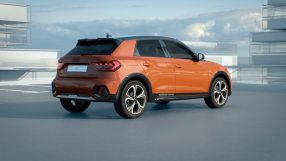
Audi A1 citycarver – Design Audi A1 citycarver – Design
Audi A1 citycarver – Design
Exterior design with robust off-road look with octagonal Singleframe and around four centimeters (2.0 in) more ground clearance thanks to higher ride height and larger wheels
- Available media:
-

-
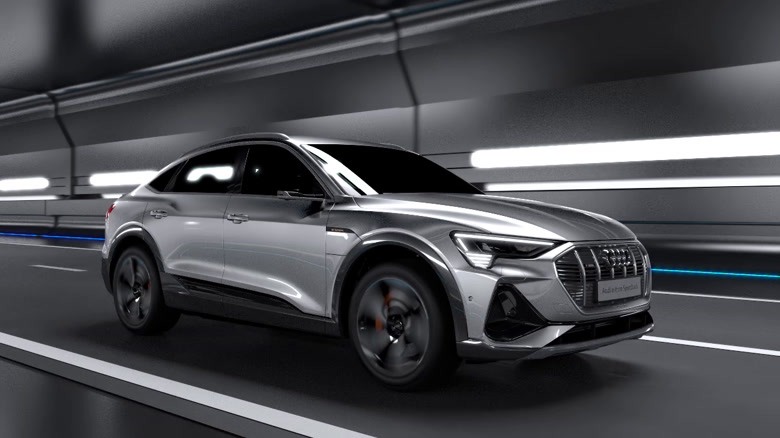
Audi e-tron Sportback - Aerodynamic -
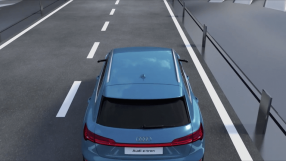
Audi e-tron – Acoustic -
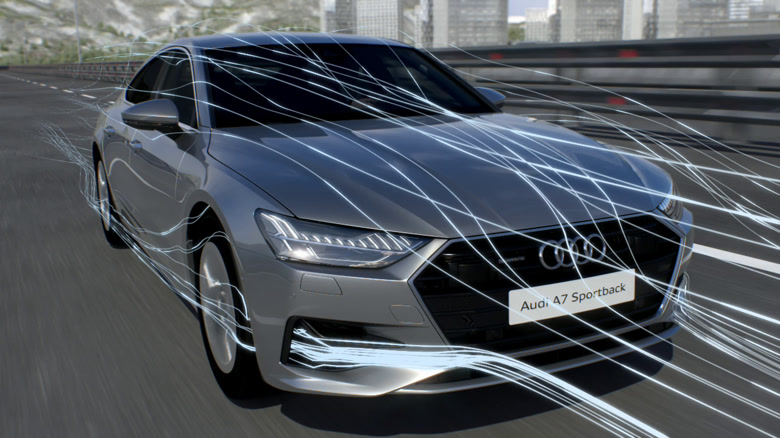
Audi A7 Sportback Aerodynamik_EN -
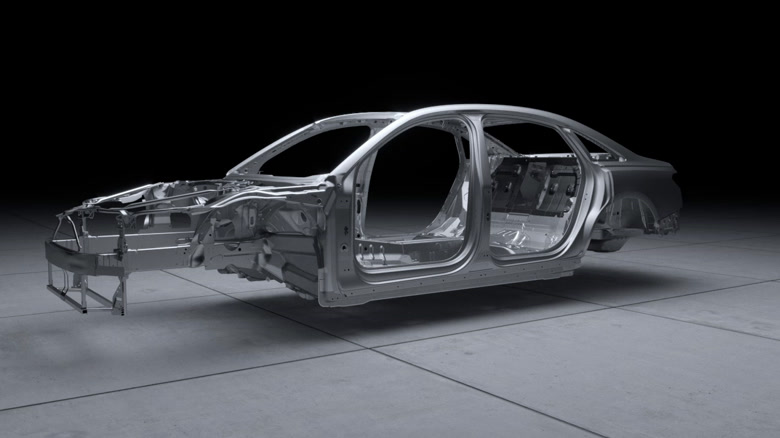
Audi A8 - Multimaterial Audi Space Frame Audi Space Frame
Audi Space Frame
When it introduced the first A8 in 1994, Audi had not only developed the radically new ASF design and put it into series production, it had also developed all of the steps required for its production. The launch was preceded by a development process lasting 12 years. Since this time Audi has built on its competitive edge step by step. The arc spans three generations of the A8 and also includes the A2 along with its legendary three-liter version, the A2 1.2 TDI. By the end of 2010 alone, the company had produced some 550,000 vehicles with the ASF body – far more than any other manufacturer in the world.
- Available media:
-

-
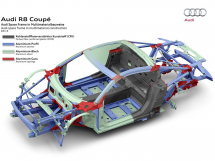
New Audi Space Frame with high proportions of aluminum and CFRP
New Audi Space Frame with high proportions of aluminum and CFRP
The R8 V10 plus* has a dry weight of 1,454 kilograms (3,205.5 lb). The key factor behind the consistent lightweight design is the body shell with multimaterial Audi Space Frame (ASF): It weighs only 200 kilograms (440.9 lb). The resulting unladen weight of 1,555 kilograms (3,428.2 lb) leads to a superior power-to-weight ratio of 3.46 kg/kW (2.55 kg/hp).
- Available media:
-

-
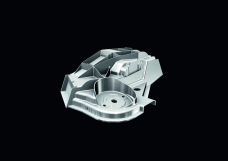
Aluminium as a material
Aluminium as a material
Aluminum is an excellent material for vehicle bodies. With its low density of 2.7 grams per cubic centimeter (0.098 lb per cu in), it is roughly two-thirds lighter than conventional grades of steel, and since it is a relatively soft metal, it is easy to machine. Alloys, the most important components of which are magnesium and silicon, provide the high strength necessary for vehicle bodies.
- Available media:
-

-
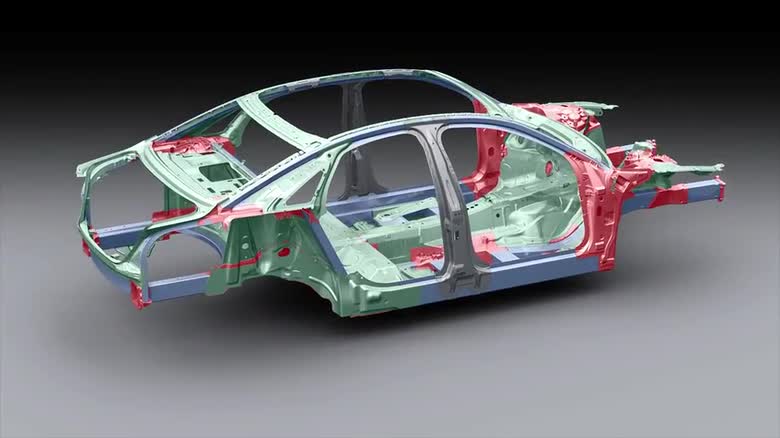
Semi-finished components Semi-finished components
Semi-finished components
The ASF body comprises three semi-finished components: extruded sections, diecast components and aluminum panels. Audi engineers employ each of these components following the principle: “The right material in the right place for optimal function.”
- Available media:
-

-
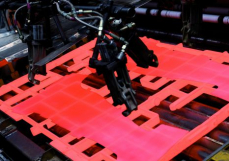
Hot-shaped steels
Hot-shaped steels
A number of steel bodies from Audi, from the A1 (Combined fuel consumption in l/100 km: 7.1 – 3.8; Combined CO2-emissions in g/km: 162 – 99)** to the A7 Sportback, comprise significant proportions of high- and ultra high-strength steels of different strength classes. The best of these are the hot-shaped steels, which stand out due to their extreme tensile strength and the resulting weight-savings potential.
- Available media:
-

-
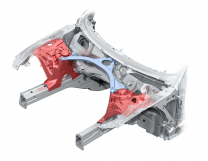
Multimaterial Space Frame
Multimaterial Space Frame
Audi is taking the development of the steel body a step further – to the Multimaterial Space Frame, which combines components of aluminum, steel and fiber-reinforced polymers (FRP) with one another. The future of this new “ultra” technology has already begun with the bodies of the A7 Sportback and the new A6 (Combined fuel consumption in l/100 km: 9.6 – 4.4; Combined CO2-emissions in g/km: 225 – 114)**.
- Available media:
-

-
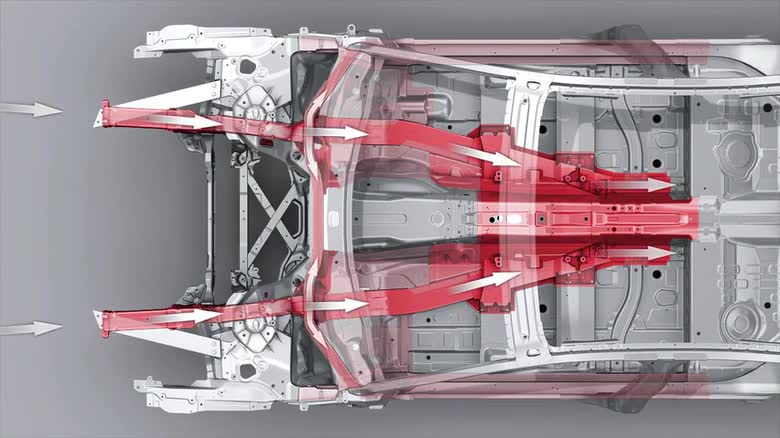
Crash safety Crash safety
Crash safety
In every development process, crash safety is of utmost priority for Audi. Each new model must comply not only with European standards, but also with the regulations of major export countries as well as strict specifications that the brand itself has defined.
- Available media:
-


-
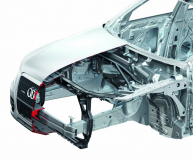
Pedestrian Protection
Pedestrian Protection
Cars from Audi also meet all the requirements in the event of an accident involving a pedestrian. In the A8, for example, a foam component between the front bumper and its cross-member lessens the impact on the knees.
- Available media:
-

-
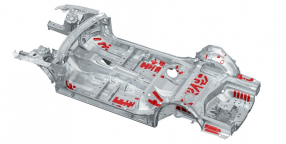
Vibration behavior
Vibration behavior
Undesired resonant vibrations in the body are strictly taboo. At Audi a great deal of work goes into preventing or minimizing such vibrations. In the A8, for example, the development engineers specifically analyzed and minimized all vibration levels at the contact points between the passengers and the body – the floor panel, the seats, the steering wheel, and the inside mirror.
- Available media:
-

-
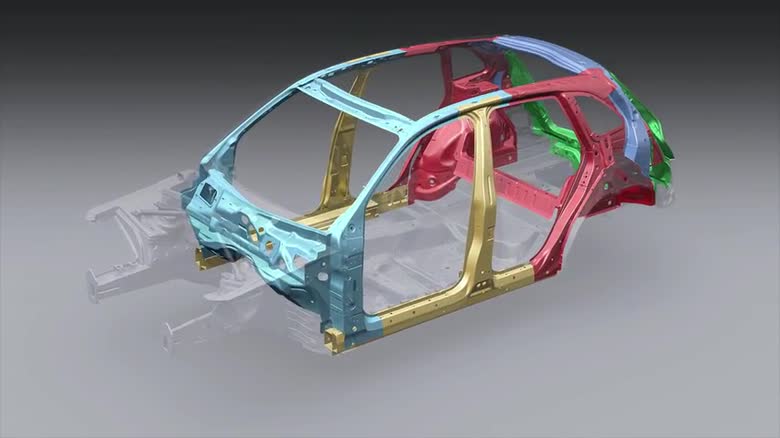
Torsional stiffness in the Audi Q5 Torsional stiffness
Torsional stiffness
Static torsional stiffness, the resistance to torsion in the longitudinal direction, is a critical factor in determining a body’s strength and a primary consideration for each new design from Audi. In the A8, for example, torsional stiffness increased by approximately 25 percent compared with the previous model. In the TT Coupé the increase was 50 percent, and in the TT Roadster an outstanding 100 percent.
- Available media:
-


-

CFRP materials
CFRP materials
Carbon-fiber-reinforced polymers (CFRP) are particularly attractive materials for the “ultra” lightweight design from Audi. The brand already offers a number of large and small CFRP components, primarily in the R8 model family. These range all the way to partially self-supporting structural components such as the side walls and the cover for the top component in the R8 Spyder.
- Available media:
-

-
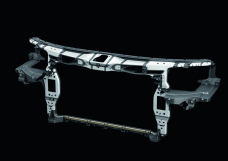
Other materials
Other materials
Fiber-reinforced polymers (FRP) offer many advantageous possibilities for the “ultra” lightweight design of the future. Development engineers at Audi are by no means fixated on CFRP alone. They are instead exploring all avenues.
- Available media:
-

-
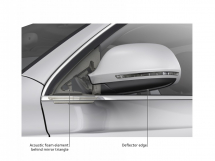
Aeroacustics
Aeroacustics
Low wind noise is an important comfort factor, particularly on the highway. At speeds of 120 km/h (74.56 mph), the whooshing of the wind is the loudest source of noise in the interior of many cars.
- Available media:
-

-
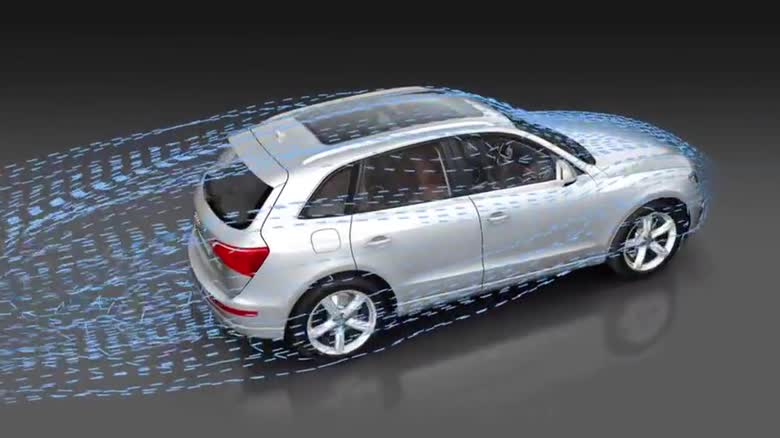
Air flow around the Audi Q5 Aerodynamics
Aerodynamics
Aerodynamic drag plays an important role in customers’ driving behavior. In cars such as the A8, which are used predominantly for long-distance travel, aerodynamic drag also accounts for almost half of the running resistance. Outfitted with the 4.2 FSI, the luxury sedan has a drag coefficient of 0.26 and a frontal area of 2.41 sq m (25.94 sq ft). Low lift coefficients at the front and rear axles ensure confident stability at highway speeds.
- Available media:
-


-
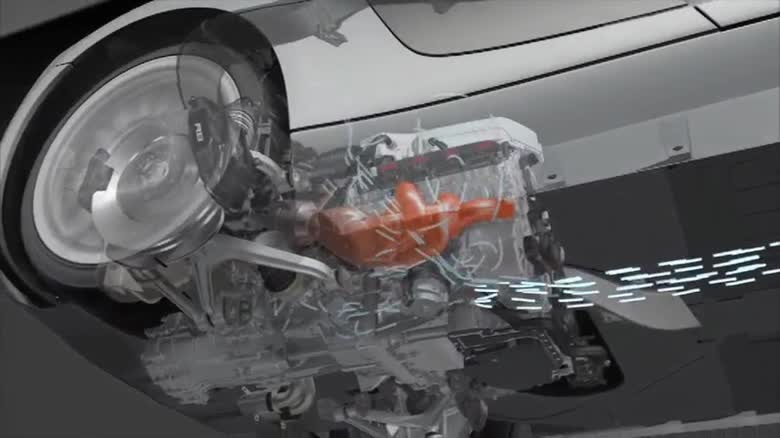
Air flow through the engine compartment Air flow through the engine compartment
Air flow through the engine compartment
The study of air flow through the engine compartment is a relatively recent branch of aerodynamics. In the new models, the area around the grille is thoroughly sealed so that the inflowing air reaches the radiator with virtually no losses instead of becoming turbulent.
- Available media:
-


-
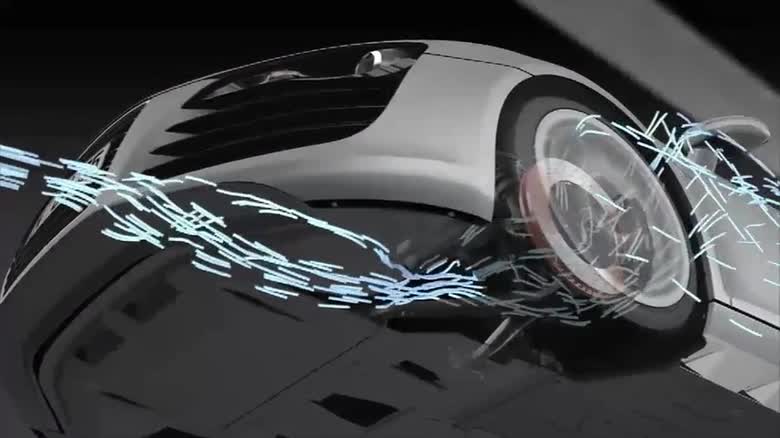
Underfloor of the Audi R8 Underbody
Underbody
A car produces 40 to 50 percent of its total aerodynamic drag in and around the underbody, the wheels and the wheel arches. Audi has an excellent tool for optimizing these zones – the aeroacoustic wind tunnel. With its rolling floor and the four small treadmills on which the wheels can turn, it provides insightful and detailed analyses.
- Available media:
-


-
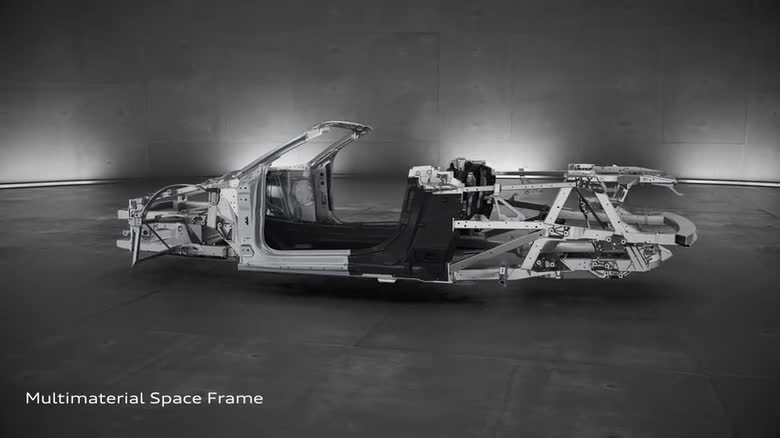
Audi R8 Spyder V10 - multimaterial construction principle Audi R8 Spyder V10 – Audi Space Frame
Audi R8 Spyder V10 – Audi Space Frame
According to DIN unladen weight without driver, the new Audi R8 Spyder* tips the scales at just 1,720 kilograms (3,792.0 lb); dry weight is a mere 1,612 kilograms (3,553.9 lb). The key to this outstanding figure is the new multimaterial Audi Space Frame (ASF). It combines aluminum components with components made of structurally integrated carbon fiber-reinforced polymer (CFRP). The ASF in the new Audi R8 Spyder has a total weight of just 208 kilograms (458.6 lb).
- Available media:
-

Body

At Audi, the body is much more than a car’s shell; it is a technical highlight and provides the basis for a numberof qualities. Lightweight design, precision, stiffness, vehicle dynamics, safety and aerodynamics - the brand with the four rings is far ahead of the competition in all of these areas.